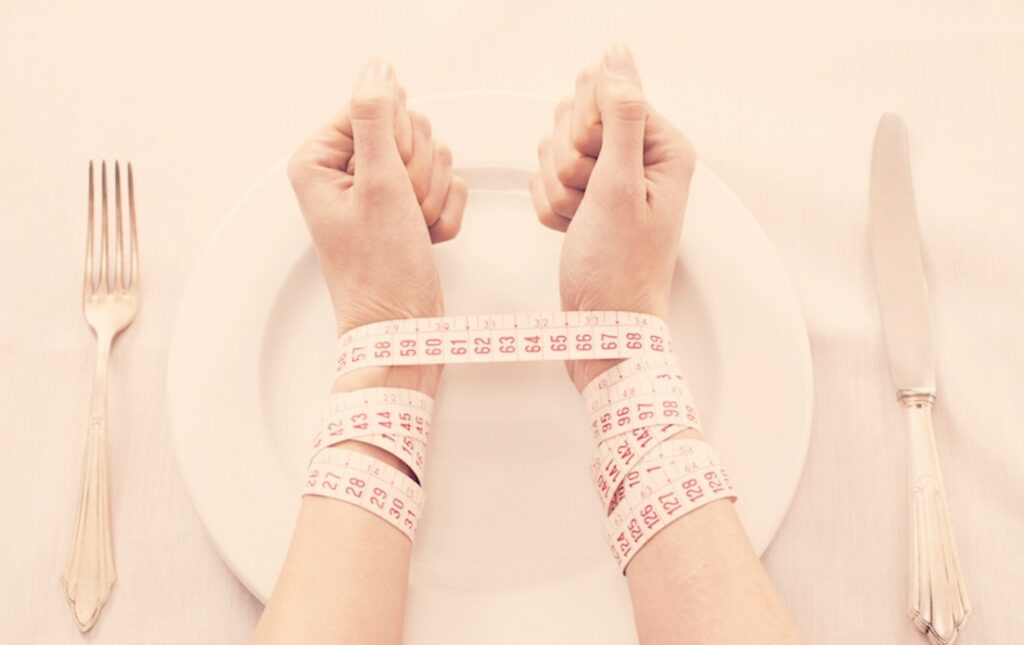There are many kinds of eating disorders, which may strike an individual over a certain period of time. Eating disorders are mental as well as physical and have the power to completely demolish a person’s self-esteem. In order to prevent this and many other disturbing outcomes, it is best if one can identify a possible disorder quickly.

The way to do this is to know about the warning signs of eating disorders well in advance. Consequently, you might be able to spot and prevent the progress of an eating disorder in a loved one, or even yourself. Below are a few signals to watch out for:
- Strange Food Behaviour
This is a wide topic, but strange dietary habits are often a signal of something more serious. However, one should see whether the unconventional eating habits are relatively new or not. If a person has always had a quirky eating ritual, instead of recently developing one, they’re probably all right.
Worrisome food habits include a strict and potentially dangerous diet, such as one which allows too few calories. Other habits may include replacing solid foods with liquids or avoiding some food groups altogether. This may result in weakness and dizziness, yet the person refuses to curtail these habits.
Other habits to watch out for in yourself and your loved ones are:
- Binge Eating
- Laxative Abuse
- Purging or consistent exercise after meals
- Food hoarding
- Exercise in any case, even when injured, in rough weather, or otherwise inconvenient.
- Disliking foods once enjoyed
- Avoiding situations that include food, such as picnics
- Cooking huge meals for others, talking about food, but not eating
- Negative Body Image
Those individuals who develop eating disorders frequently exhibit low self-esteem. This is usually brought out in their perception of their own body. For example, anorexics would view themselves as overweight even when their bones are sticking out.
If you or someone suddenly develops a fixation on body shape, weight, and appearance, it might be a cause for worry. This could include an obsession with pictures of thin people, dieting tips from every source, weighing oneself repeatedly, etc.
- Changes in Social Behaviour
You may be naturally shy, but if you isolate yourself from old friends, it’s not a good sign. If this isolation and refusal to go on once-enjoyed excursions have something to do with food, that’s even worse.
You may also notice a change in your clothing style. Are you wearing baggy clothes because you think your body is too ugly? Is someone you know trying to hide food for later consumption, or throwing food away? If you find yourself or someone else exhibiting such behaviors, it may be time to take action.
Other strange behaviors include cutting food into tiny pieces, rearranging it so that it looks eaten, or eating very slowly. Of course, all of these could be perfectly healthy lifestyle changes for someone trying to lose weight. If these become obsessive to the point of harm, though, the problem could become life-threatening.
- Physical Signs
Signs of eating disorders manifest themselves in physical ways as well. Watch out if you suddenly drop or gain weight, or if your weight seems to fluctuate rapidly. Feeling cold without due reason is also a worrisome sign.
Other physical signs include changes in a female’s menstrual cycle, frequent vomiting, and fainting. Damaged teeth, calluses, and swollen cheeks couple with great fatigue are also a cause for concern. This is especially true if all these signs prevent one from going about their normal routine.
Wrapping Up…
If you or anyone you know has these signs, it does not necessarily indicate an eating disorder. However, it may be worthwhile to monitor these red flags. If they get too extreme, to the point where they affect one’s everyday life, it is recommended to seek professional help.
Author Bio
Hannah Carrey is a Nutritionist, Dietician, and a Blogging Guru at Coursework Help forum. In her blog, she shares information regarding all types of foods, health, and lifestyle. She is a fitness enthusiast and indulges in various forms of exercises.
